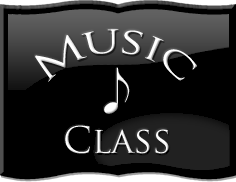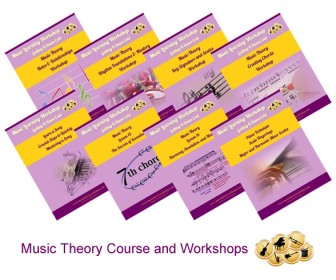A Four Step Process
 How would you like to jump start your music theory education with an approach that acknowledges a students ability to learn more quickly than we give them credit?
How would you like to jump start your music theory education with an approach that acknowledges a students ability to learn more quickly than we give them credit?
Sounds good, but can it be accomplished?
My answer is not only yes, but unequivocally yes.
The Process
I am going to share a 4 step process that I have adopted in creating teaching materials and applying to learning experiences. This method is used for developing learning materials that both help get past roadblocks in learning and is used as a system for explaining and teaching others.
Get to know the basic structure, although simple, it is a key component in your success. It doesn’t take any more applied effort to complete, but the rewards are far greater.
1. Start with the big picture
For our music education method we approach any new subject with definition of terms, symbols, and notations that are key to understanding. Clearly pointing out them out and giving them meaning is necessary to building a common foundation or context in which you will be working.
Take the example of music’s master staff. Instead of jumping into the middle of the lines and spaces and trying to define note names it would be better to define the symbols associated with the staff.
Wouldn’t it make sense that we define what a treble stave and bass stave are and how they are identified with clefs? Why there is a bar line that connects them. What the numbers like 4/4 mean even if we don’t get into the detail of exactly how they work. Talk about ledger lines above and below the staves.
Step 1 is all about painting a big picture to put things in context. Overall descriptions allow us to frame a reference for applying more details to a larger concept. This can usually be done fairly quickly and will provide boundaries for the rest of your lesson.
2. Learn the basic new concept or idea
The second step of our music education method. Once the framework is in place you begin working the details. Starting with your previous definitions you zero in a specific item to elaborate on the specific application. This usually will be very quick, but a key then is to approach it from several directions or different ways.
Using the three senses of visual, auditory, and kinesthetic (physical) we put the basic concept through paces. Looking and working it from different directions.
For the master staff example we might zero in on lines and space showing the note increments. Then showing how line to line works and moving from one clef to the next. A great example in working with rhythm would be using just the right hand, then just the left hand, and make both hands working in different patterns.
There often seems to be the concept of “here it is hope you learn it now or don’t worry we will go over it again and again until you do learn it some time later.” Using the multiple approach method the brain gets an opportunity to absorb and process the new information. Thus it builds a solid foundation for building new concepts that are applied on top of the current one, instead of relearning it to build new concepts later on.
3. Work It
The third step of our music education method. This is where we build upon the base to lock in what we have learned. It is done with slowly building endurance, resilience, staying power. The methods used here are aids like flash cards used in combination with speed drills. Building a series of specific charts or templates that expand the concept learned.
An example for rhythm would be working a table composed of time (beats) and accents on beats and using combinations of hand taps to work out one specific pattern. It’s a three dimensional approached easily integrated to speed up the process.
4. Own it.
The four step of our music education method. Owning it is all about having elasticity and flexibility. What does that meant? It is the final step in learning that becomes a natural part of our knowledge. It is the ability to control the actions or use of the knowledge we have acquired.
It can be the ability to groove on the rhythm. You have the ability to play with it, change it at random, slow it down, speed it up, adjust to circumstance and still have complete control of it. It might be the ability to change chord structure on the fly to re-harmonize a song.
These 4 steps are an easy process, but do require effort to organize and apply to your learning experience. Look at what you are doing now and determine if you can improve your teaching or learning experience with modifying your approach. You may be surprised by the result.

